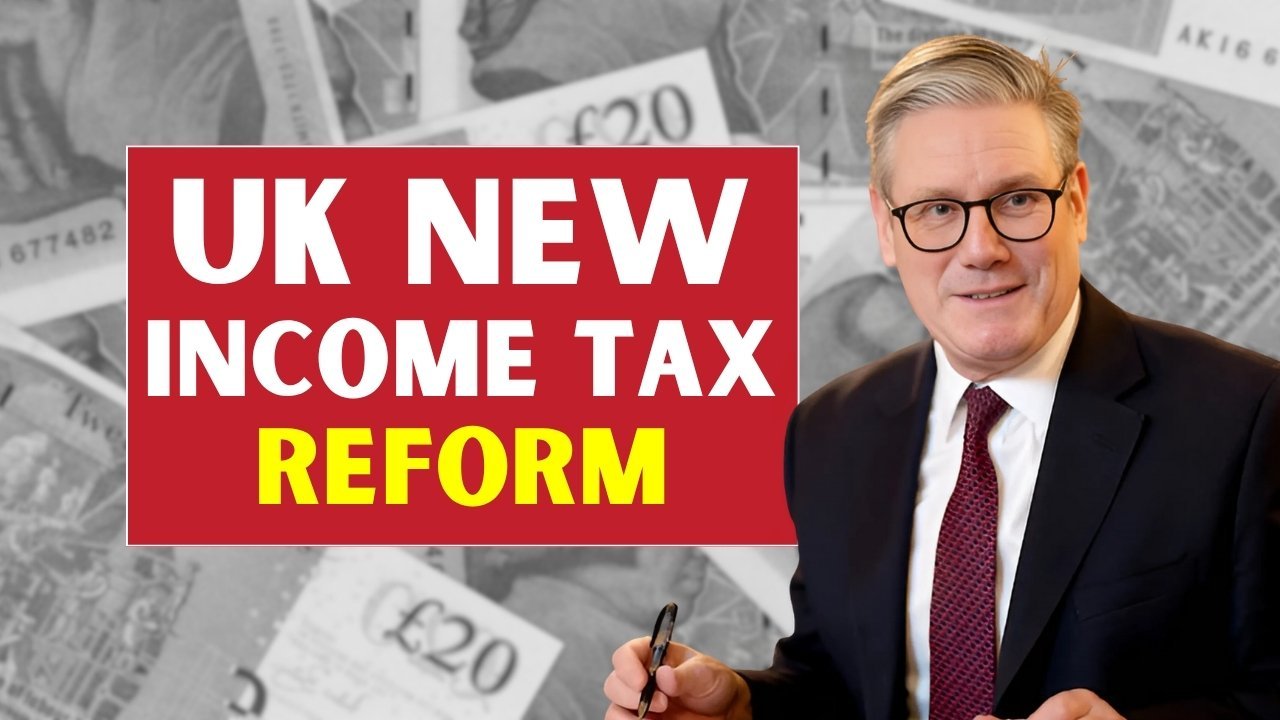Calls for a higher Personal Allowance come amid rising living costs and stagnant thresholds. The current limit of £12,570, which has been frozen since 2021, has pushed more people into tax through “fiscal drag.” Each year, as wages and pensions rise, the freeze effectively increases the number of taxpayers without any change in nominal rates.
A petition launched by Alan David Frost advocates for increasing the tax threshold to £20,000, which, according to its supporters, would provide significant financial relief for pensioners while also streamlining the current tax system. The proposal aims to alleviate some of the financial burdens that retirees face. However, despite these arguments, the UK Government has confirmed that there are no intentions to amend the tax allowance for the upcoming 2025/26 fiscal year.
Table of Contents
Present Structure of the Personal Allowance
The Personal Allowance defines the amount of income that individuals can earn before paying tax. It applies uniformly across the UK, though Scotland uses separate tax bands. The allowance begins tapering after £100,000 of income and is fully withdrawn at £125,140, creating an effective marginal rate higher than the standard 40%.
Current Personal Allowance Framework
| Tax Year | Allowance | Taper Begins | Ends At | Status |
|---|---|---|---|---|
| 2025/26 | £12,570 | £100,000 | £125,140 | Frozen until 2028 |
This freeze, which lasts through April 2028, continues to boost Treasury revenues while limiting take-home pay for middle-income earners and pensioners whose incomes have increased due to the State Pension’s triple lock.
Impact of a £20,000 Threshold
If implemented, a £20,000 allowance would expand the tax-free income by £7,430, saving £1,486 annually for a basic-rate taxpayer (20% of £7,430). Pensioners with modest incomes, primarily from the State Pension, would likely fall below the tax line entirely.
However, workers earning under £12,570 would see no benefit, and higher earners would enjoy larger gains in absolute terms. Economists caution that the change would be expensive and uneven, potentially benefiting middle- and higher-income households more than those most in need.
Estimated Fiscal Impact of Raising the Allowance
| Proposed Change | Estimated Cost | Main Risk | Economic Effect |
|---|---|---|---|
| PA raised to £20,000 | £40–£50 billion/year | Borrowing increase or spending cuts | Boosts income, possible inflationary pressure |
Why the Petition Resonated?
The proposal appeals to public frustration with stealth taxation caused by the threshold freeze. As more individuals pay tax each year without nominal rate increases, a higher allowance feels like a straightforward way to restore fairness. For pensioners, it would also eliminate the administrative burden of paying tax on small incomes.
Its simplicity is a major factor in its popularity, offering a direct cash gain that’s easier to understand than targeted credits or relief programs. Despite its appeal, experts emphasize that fiscal stability remains the primary obstacle to the government’s adoption.
Steps in the Petition Process
The petition has successfully gathered more than 281,000 signatures, triggering an official response from the government and paving the way for a Parliamentary debate. It’s important to note, however, that these debates are purely advisory in nature, meaning they do not result in immediate changes to existing laws.
For any proposed changes to be enacted, they must first be outlined in a government Budget or an Autumn Statement. Following that, they need to be incorporated into a Finance Bill before they can take effect.
In the meantime, Her Majesty’s Revenue and Customs (HMRC) and employers will maintain the application of the £12,570 income threshold during the 2025/26 tax year, ensuring that current tax regulations remain consistent until any new policies are officially implemented.
Tax Planning Under Current Rules
Though the allowance remains unchanged, individuals can still manage liabilities strategically.
Two Key Tax-Saving Measures:
- Marriage Allowance Transfer – Allows a low-earning partner to transfer 10% of their unused PA, saving about £252 annually for the household.
- Pension or Charity Contributions – Making contributions reduces adjusted income and can help restore part of the allowance for those nearing the £100,000 taper threshold.
Taxpayers can also utilize Individual Savings Accounts (ISAs) to earn tax-free interest or investment returns, thereby further minimizing their exposure.
Frequently Asked Questions:
1. Will the Personal Allowance rise to £20,000 in 2025?
No. The government has confirmed that the allowance will stay at £12,570 for 2025/26, with no announced plan for an increase.
2. How much could a worker save if the change were approved?
A basic-rate taxpayer would save roughly £1,486 annually, representing the 20% tax on the additional £7,430 of income exempted.
3. Would pensioners stop paying Income Tax under a £20,000 threshold?
Yes, many pensioners with income limited to the State Pension and small private pensions would drop below the tax line. Those with larger pensions or investment income would still be liable.
4. Why does the government oppose the proposal?
Officials argue the policy would cost £40–£50 billion a year, forcing spending cuts or higher borrowing, and risking inflation.
5. When could changes be announced if reconsidered?
Any alteration to the allowance must be declared during a Budget or Autumn Statement, followed by parliamentary approval through a Finance Bill.




